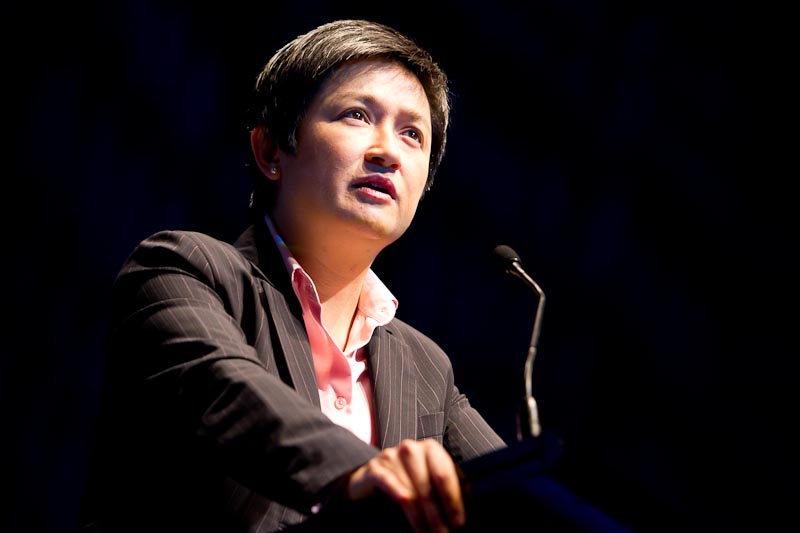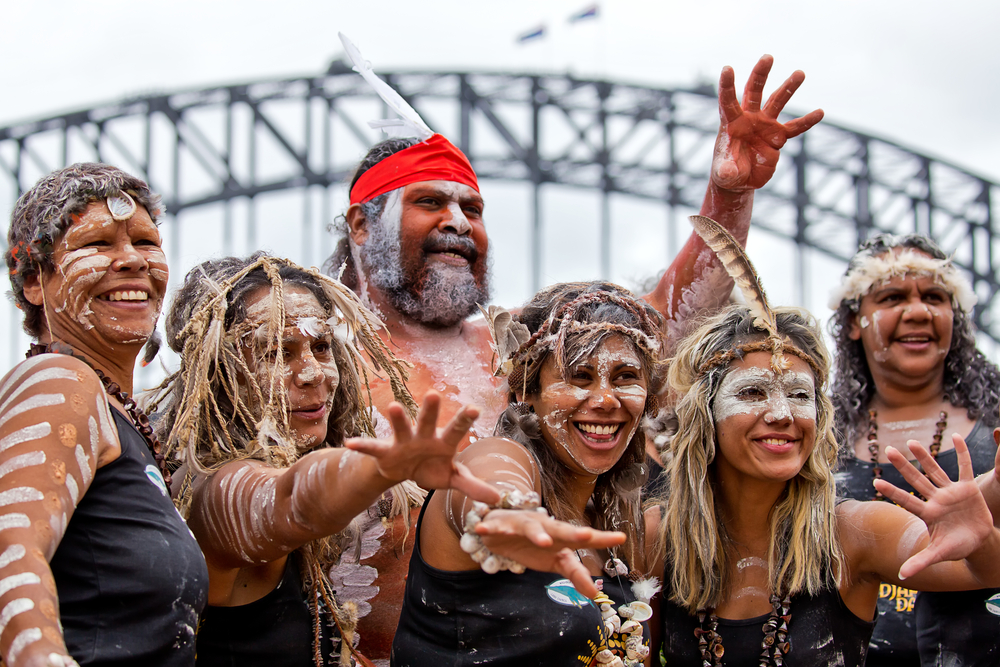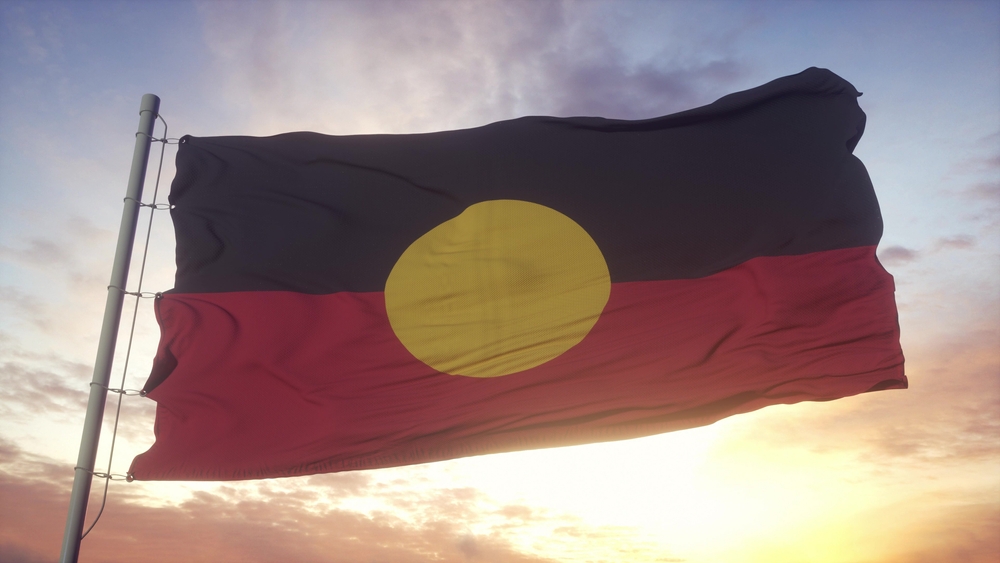Prior to the 2022 election, now Foreign Minister Penny Wong announced that if elected, the government would pursue a First Nations Foreign Policy. A decisive global moment, the announcement builds off work centring First Nations experience, perspectives, practices, and voice in foreign policy. Leaning on Aotearoa New Zealand’s initial experiences with Māori or Indigenous foreign policy, the foreign policy will be developed to extend and ingrain nascent movements to transform Australia’s government to better reconcile colonial power structures with First Nations experiences and leadership.
In recent years the Department of Foreign Affairs and Trade (DFAT) have aimed to transform Indigenous diplomacy to recognise and integrate First Nations people, culture, science, innovation and entrepreneurship, yet the Foreign Minister’s policy commitment seeks to make these steps more substantive, and adds a broader vision to DFAT’s at times troubled bureaucratic reform attempt.
Explicitly dovetailing with the ALP’s overarching moves to adopt the Uluru Statement from the Heart, we are currently at a critical moment – establishing the next and potentially most transformative era of Australian foreign policy.

Penny Wong speaking at the Opening Plenary, National Climate Change Adaptation Research Facility on June 28, 2010. Picture: NCCARF. This images is published under a CC BY-NC 2.0 license.
But, how did we get here and where are we going?
A ‘branded’ foreign policy is not a new thing. Sweden famously became the first nation to adopt an explicitly labelled Feminist Foreign Policy (FFP) in 2014, since leading to eight countries internationally adopting the policy (including Sweden, France, Canada, Luxembourg, Mexico, Spain and Libya).
An FFP approach is designed to place gender equality at the centre of foreign policy, given gender equality’s strategic importance on impacting everything from poverty and inequality to violence, state peace, and flourishing societies.
So far, the results have been mixed. Sweden’s FFP involves a focus on rights, representation, resources, and reality – and although some areas of Sweden’s foreign policy already seen major changes (like increases in women’s representation in diplomacy), the FFP has had little impact on its arms export industry to date. There is also some evidence that such labelling has merely been a nation-branding exercise.
In Australia, until recently we did not have an explicitly branded foreign policy – First Nations, Feminist or otherwise. However, Monash University researcher Katrina Lee-Koo noted in 2020 that Australia does have a pro-gender foreign policy by ‘stealth’. Indeed, she notes that: “There is a genuine embrace of pro-gender norms, but the masculinist cultures of Australia’s politics limit the capacity for it to be publicly debated and celebrated.”
You can look to examples such as DFAT’s commitment that 80% of all development aid must address gender inequality in program implementation or its Women in Leadership Strategy’s which even in its first five years was successful in reaching (some) key targets for equality.
The inability to ‘wave the flag’ to celebrate some of this work to its full extent is a shame, but has also allowed Australia’s foreign policy machinery to work quietly when needed and make strategic investments in equality, including through Pacific women’s leadership programs.
While we can’t claim to have an explicitly feminist foreign policy, we do have growing support for formalising our existing pro-gender policy orientation. Currently we have an Australian Feminist Foreign Policy Coalition (and of which both authors are members), which is heavily engaged in supporting the adoption of an FFP in Australia.
Moreover, many of our international compatriots have sought to influence Australia’s foreign policy in ways that strategically align our objectives to make greater influence around emerging challenges, such as the effect of COVID-19 on gender-equality backsliding or rising sea levels in the Pacific and its impact on women.
How do we reconcile the overt First Nations and covert feminist foreign policies currently pursued?
To start, it is important to recognise that whilst there has been a record of White Feminism in Australia (historically and contemporarily), a more transformative, intersectional type of equality is increasing (and rightly) pursued.
Feminist governance and practice has certainly had its gaps, yet many of the underlying theoretical ideas have great merit and complementarity with a First Nations foreign policy orientation: a focus on foregrounding previously sidelined, ‘unseen’ or invisible people and communities, subverting traditional power structures that have oppressed ‘others’, and centring individuals’ agency, experience, perspectives and world-view.
The significant overlap between these two policy imperatives is also not unknown, and indeed, many advocate it is impossible to realise the full potential of a feminist foreign policy in this country without fully integrating First Nations peoples, approaches, and values.
Similarly, a First Nations foreign policy strengthens much of the underground feminist foreign policy currently pursued. Concepts such as ‘deep listening’, intergenerational justice and a focus on Indigenous people and communities – including our near neighbours – all benefit feminist aims too.
So too does the Indigenous foreign policy’s focus on “shared goals, shared custodianship and shared responsibility”, relational ways of thinking about the world, and diplomatic practices built upon strong shared foundation. To borrow from feminist foreign policy, an explicit focus on rights, representation, resources, and reality would also be enormously beneficial, given that Indigenous representation in government, let alone in foreign policy, is still lagging woefully behind.
A First Nations foreign policy therefore has great potential in rectifying internal and external injustices, silences and marginalisations.
Of course, a First Nations foreign policy is also something equally important in its own right. First Nations people possess a unique sovereign relationship on this continent, as well as inherent cultural rights, practices, and law, shared between the over 350 various nation groups.
Being part of this continent for over 65,000 years, First Nations ways of knowing and doing are not only an important part of the history of this continent, and this country, but the very fabric of identity for how First Nations see themselves within the world, and how Australians should see our place in it also.
There is much potential in reframing our national focus to be more in line with these approaches, as our unique political thought, and diplomatic practice, has so much to offer.

First Nations Australians have been on this continent for more than 65,000 years and their unique outlook and knowledge needs to be incorporated into diplomacy, argue authors James Blackwell and Elise Stephenson. This photo shows Indigenous dancers strike a posing during the Homeground festival – a major annual celebration of aboriginal culture. Picture: Shutterstock
Ultimately, the pursuit of a First Nations foreign policy will be a powerful signal globally. Much like Sweden was hailed a leader of nations in stepping out in 2014 to pursue a Feminist Foreign Policy, the next period of Australian foreign policy development will be keenly watched, and indeed is already being watched.
Yet, if there is anything to learn from other ‘branded’ foreign policies globally, it is that substantial work is needed to convert the rhetoric to action.
It is worth considering the powerful combination an explicitly labelled (Feminist) First Nations Foreign Policy could deliver.
Indeed, much of the debate around the most recent National Action Plan on Women, Peace and Security was on explicitly reconciling our usually outward focus around reducing inequality and violence through foreign policy with our domestic reality – particularly for First Nations women.
Reconciling policy inconsistencies between foreign and domestic policy, as well as combining strengths of First Nations and Feminist foreign policy, is therefore deeply important.
As we have learned in the FFP experiment, it is also important that policies must not simply co-opt First Nations people and ideas without recognition, respect and opportunities. The ‘branding’ value that a First Nations Foreign Policy lends Australia – in terms of credibility and legitimacy – is significant and must not replicate the exploitation historically enacted by government. This is a key learning from FFP.
Indeed, from some of our own research there is evidence that gender reforms and policies in Australian foreign affairs have made it harder to continue to identify enduring gender inequalities, and even a notion that gender issues in foreign policy have already been ‘fixed’, despite extensive evidence to the contrary.
In other words, development of the next generation of foreign policy must be more than just a gender or First Nations ‘tick-box’ exercise.
As Senator Wong begins her term as foreign minister and begins both the work, and the promoting, of this policy, it is important that First Nations voices and communities remain centred in this process. Without direct input from First Nations, the potential of this policy can only go so far, and will end up much the same as other policies designed “for” First Nations, rather than “with” First Nations.
This policy is one explicitly tied in with the promise of the Uluru Statement, and its vision for a different Australia, and a different relationship between the state and First Nations.
The actual @ulurustatement is on display at #fecca2022 @iFECCA #UluruStatement pic.twitter.com/iaaFnzvZ9I
— Alison Read (@Ali_Read) June 16, 2022
That process is also the one which, uniquely, met with First Nations on equal terms, and sought out what was the approach best suited to change, and how to do that centred in cultural authority and respect. Repeating such a process here can only strengthen, not weaken, this work.
The potential impacts of a (Feminist) First Nations Foreign Policy is deeply transformative. But, it will also require a focus on medium to long-term impacts and not only short-term announceables. Collaboration, partnership and learning to develop a (Feminist) First Nations Foreign Policy is the crucial next step forwards.






